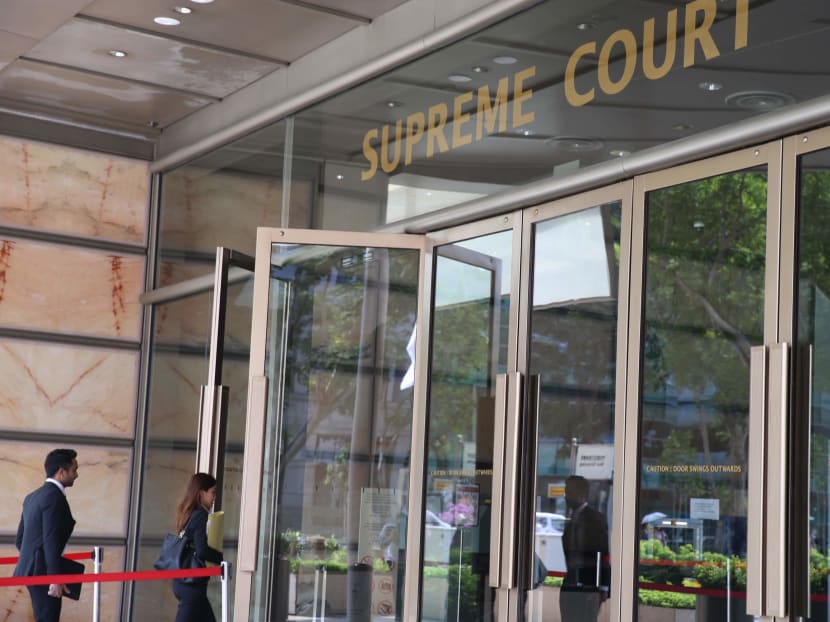High Court dismisses SDP’s appeal against Pofma direction over 10 million population claim
SINGAPORE — A High Court judge has dismissed an appeal by the Singapore Democratic Party (SDP) against a correction direction issued over its population claims under the nation’s fake news law, after the apex court gave the party a partial victory in a separate case last year.

- The Singapore Democratic Party had appealed to the High Court to cancel a correction direction under a fake news law
- The party had claimed that the Government had plans or was toying with the idea of having a population of 10 million by 2030
- It referred to remarks made by HDB’s then chief executive during a lecture series in 2018
- High Court judge Woo Bih Li dismissed the appeal on May 10, noting that the chief executive did not allude to a population of 10 million
- The judge also used a new five-step framework laid out by the Court of Appeal in late 2021
SINGAPORE — A High Court judge has dismissed an appeal by the Singapore Democratic Party (SDP) against a correction direction issued over its population claims under the nation’s fake news law, after the apex court gave the party a partial victory in a separate case last year.
On Tuesday (May 10), Justice Woo Bih Li ruled that SDP “deliberately included” an assertion that Singapore's population would rise to almost 10 million by 2030 in a press release, despite knowing that it was false.
The party said that it derived the assertion from a top public servant’s projections.
Because of this, the judge also ordered the party to pay S$7,000 in legal costs to the Attorney-General, the respondent in the proceedings.
The correction direction, made under the Protection from Online Falsehoods and Manipulation Act (Pofma), was in response to a claim made by SDP during the 2020 General Election campaign.
In a televised debate, the party’s chief Chee Soon Juan said that the Government had plans or was “toying with the idea” of having a population of 10 million people in Singapore.
The party was campaigning for voters to “say no” to this figure.
SDP said that this number has been bandied about in public discussions. It also referred to an article from The Straits Times published in March 2019, which contained remarks made by Deputy Prime Minister Heng Swee Keat on population size.
The topic generated some heated moments during the one-hour televised debate between Dr Chee and Dr Vivian Balakrishnan from the ruling People’s Action Party (PAP). Dr Balakrishnan accused Dr Chee of “raising a false straw man”.
Following the debate, Mr Heng and The Straits Times clarified that the Government had never proposed or targeted an increase of Singapore’s population to 10 million.
PRESS RELEASE
The day after the debate, SDP published a press release on its Facebook page where it alleged that Dr Cheong Koon Hean, then chief executive officer of the Housing and Development Board (HDB), had said that Singapore’s population density would increase from 11,000 people per square kilometres to 13,700 people per sq km between now and 2030.
“Given our land area, this means that our population would go up to nearly 10 million by 2030.Part of the Singapore Democratic Party statement that was the subject of a correction direction under the law”
“Given our land area, this means that our population would go up to nearly 10 million by 2030,” SDP added.
PAP already demanded that SDP apologise for misleading Singaporeans with the figure. But SDP refused to back down, replying that it did not invent the number out of nowhere and that it had achieved one of its campaign goals.
The Pofma office was then instructed to issue a correction direction to SDP.
The direction explained that Dr Cheong was referring to living density, not population density, in her remarks during an IPS-Nathan Lecture Series in April 2018.
Living density takes into account only the land available for urban areas and excludes land used for ports, airports and defence, among other purposes.
SDP’s application to cancel the correction direction was then rejected by the Minister for National Development.
After this, the party appealed to the High Court on various grounds, including one where it said that their statement was one of opinion, which was not covered under Pofma. They also argued that it was not a false statement of fact.
COURT OF APPEAL JUDGEMENTS
The appeal was adjourned until after the Court of Appeal released its first set of judgements on Pofma in October last year. Pofma had taken effect two years earlier.
The apex court ruled on an appeal concerning three Pofma correction directions that the Ministry of Manpower had issued to SDP in 2019.
This was over two Facebook posts and an article on its websites on jobs in Singapore and the employment of professionals, managers, executives and technicians (PMETs).
The apex court laid out, for the first time, a five-step framework to determine whether or not to overturn a correction direction under Pofma.
Ultimately, the court ruled that Pofma was constitutional, and that the burden of proof lay on the person making the allegedly false statement and not the government minister issuing the correction direction.
The court also disagreed with the Attorney-General’s argument that a falsehood remains a falsehood even before a court determines it to be false.
The judges said that it is “untenable” to regard a statement as false just because the minister has identified it to be so. “The minister may, after all, be mistaken. Truth and falsehood are ultimately matters to be determined by a court based on the evidence.”
The judges then partially allowed SDP’s appeal in one of the three correction directions, while dismissing the other appeals.
On the day of the ruling, the Ministry of Manpower issued a new correction direction to SDP. It said that the party’s original statement — that local PMET employment had fallen — was still “completely false” no matter if it included or excluded permanent residents.
The SDP later filed an appeal, which is now pending, to set aside that direction.
SDP 'STEERED AWAY' FROM HDB LETTER
As for the present case, High Court judge Woo said that the “fundamental flaw” in the party’s position was that Dr Cheong had not alluded to a population of 10 million in the first place.
During the appeal, SDP’s lawyer Suresh Nair reasoned that the party’s statement was an accurate report of what Dr Cheong had said because the terms “living density” and “population density” were virtually synonymous.
Mr Nair then contended that SDP had given its interpretation of what Dr Cheong meant, making clear that she did not herself say that Singapore’s population would go up to 10 million.
Because of this, Mr Nair argued that the deductive process by which the 10 million figure came about made the SDP’s statement an opinion, as opposed to fact.
The Attorney-General, representing the Government, disagreed and argued that SDP was not purporting to convey its own opinion but allegedly what Dr Cheong had said. This was because the objective behind SDP’s post was to show that the idea of a 10 million population originated from the Government, not the party.
In his judgement, Justice Woo ruled that SDP’s statement “purported to be a report of what Dr Cheong had said”, which meant that it was a statement of fact.
He then said he was of the view that SDP’s statement was false.
Among other reasons, the judge said it was “telling” that SDP had chosen to steer away from a letter written by HDB’s director of strategic planning, which clarified the differences between living and population density.
Justice Woo inferred that the party was aware of the letter, including when it was published in The Straits Times and before the party published its press release.
Since the press release purported to be an accurate report of what Dr Cheong said, it should have taken the letter into account, Justice Woo added.
In addition, using the initial density stated by Dr Cheong would yield a figure of 7,920,000 people at the time of her lecture, the judge noted.
“Singapore’s population at the time was not even 6.9 million. SDP must have known that the density in Dr Cheong’s statement could not be simply applied over Singapore’s total land area,” Justice Woo added.
The party has not yet indicated if it will take this case to the Court of Appeal.
Justice Woo also devoted part of his judgement as to whether the appeal should have been heard in open court.
There were no special reasons to depart from the standard that all originating summonses will be heard in chambers, he ruled.
The fact that an issue was of public interest or raised a constitutional point alone did not constitute a special reason to have an open court hearing, he added.








